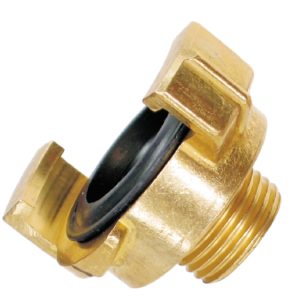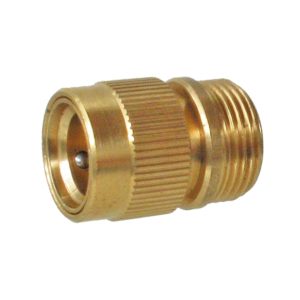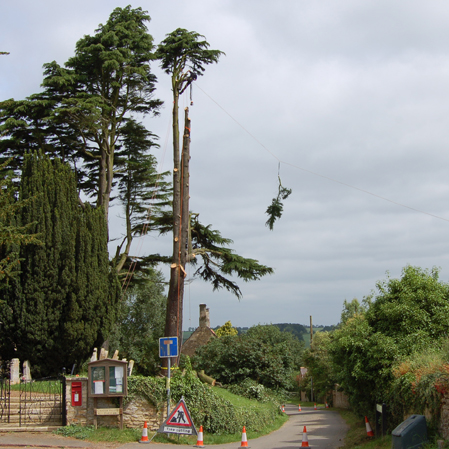
Buyers Guide to Arborist Ropes
One of the regular questions that face an arborist is knowing which rope to select. As with most products, not all ropes are created equal – but understanding which option is best for your own requirements and budget requires a bit of product knowledge.
Providing you’re selecting the right kind of rope (for example, a properly PPE certified arborist rope for climbing) you can’t go too far wrong, but you’ll find it easier and more satisfactory to take the time to select a product that you enjoy working with. With that in mind, let’s take a look at arborist ropes, their similarities and differences, and also how to take care of them.
The Difference Between Climbing and Lowering Ropes
Your ropes are, of course, some of your most essential pieces of tree gear. To start from the beginning, it’s important to understand features and specific purpose:
- Climbing ropes are used to secure an arborist to the tree. These ropes will help you ascend and descend the tree, and are not designed for any other task.
Climbing ropes have a little bit of stretch, unlike lowering ropes which have next to no stretch. This feature is important climbing, as it helps absorb the kinetic force of a sudden stop in the event of a climber’s fall, helping to prevent serious back injuries, but mustn’t be too great or it would absorb too much energy in the climbing process and cause premature fatigue.
Arborist climbing ropes must be certified to EN1891. This should be marked on the rope, along with a serial or identification number.
- Lowering or rigging ropes, on the other hand, are used to lower and move tree limbs or sections of wood. Lowering ropes are not suitable for climbing for several reasons: firstly, they’re not safety certified for such. Secondly, the composition of the rope is optimised for rigging, not for climbing. Thirdly, the wear and tear that rigging ropes go through does weaken them, meaning it cannot be relied on as a PPE item.
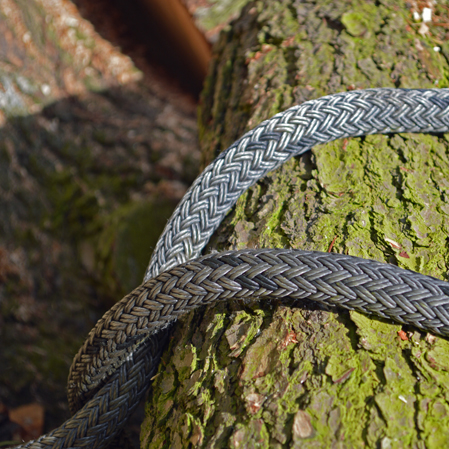
Lowering ropes are not certified to an EN standard. They do however have either a minimum breaking strain (MBS) or safe working load (SWL) and this should be marked on the rope, along with some form of identification number, prior to first use.
Note that, although these ropes share some similarities, they are different from those used for rock climbing or mountaineering. Rock climbing ropes have more stretch in them than either tree climbing or rigging ropes, as climbers will regularly take falls of several tens of feet. These ropes are also rated by the number of falls they have taken and should be discarded once they reached their limits.
Climbing Ropes
Tree climbing ropes largely fall into two categories in regard to diameters: Traditional half-inch ropes that are around 13mm in diameter, and more modern and lightweight lines that are 11 to 12mm in diameter.
A 13mm rope is easier on the hands and suitable for beginners, as it comes with higher levels of friction when used with other components. It also allows for a slower and more controllable system.
An 11mm rope, on the other hand, is lighter, less bulky, and in some cases works better with certain devices. A thinner line will also facilitate faster ascent and descent and in this regard is better suited to more experienced climbers.
The Health and Safety Directive (HSE) tree climbing guidance states that tree climbing ropes should have a minimum diameter of 10mm and not larger than 14mm.
All of our tree climbing ropes are sufficiently strong, PPE certified for climbing, and are tried and tested brands. They include:
Made in the UK, this rope is available either by the metre or in a variety of precut lengths with one or two eyes. It is a firm, tightly braided rope with a water-repellent and abrasion-resistant coating. Available in FCR (pink/white/black), hivis (red/lime/black), or Komodo (blue/orange) versions for a good range of choices, Being a firmer rope it’s slightly less responsive to friction, particularly with devices or less nubby prussics, however the price makes this rope is a good choice for the budget conscious buyer.
This well-known rope comes with the option of per metre or in a 35 or 45m hank with one or two eyes, and 13mm diameter. It’s extremely flexible which allows it to hold a knot without developing a memory. Any damage to this rope is made easier to spot by the inclusion of a ‘safety blue’ core, which becomes visually exposed through the orange and white sheath for easy identification. This is a very nice supple rope to work with, and is available with two eyes if required.
This strong and durable rope comes with or without a spliced eye, is 12mm in diameter, and has a 16-plait construction with a twisted polyester core. Its core allows it to be firm and round, and this rope has remained a favourite with many British arborists for years and seems to work well with a variety of prussics and hitches. The choice of three colourways is great as it allows colour identification within your own kit or that of your teams’, and it’s well priced.
This 11.5mm rope comes with a dual-core design that absorbs energy, making it one of our most revolutionary items. It is optionally available with Teufelberger’s patented ‘slaice’ eye – a cross between a sewn eye and a splice which gives a very strong, slimline eye with minimal bulk. Tachyon rope has fast become one of our biggest sellers, and we’ve just added another colour to the range giving us orange, green, and ash. Tachyon is a very versatile rope and is acknowledged by many climbers to be the best choice for friction devices such as the Petzl Zigzag.
- Marlow Vega Climbing Rope
The Vega is the newest addition to our range and at 11.7mm diameter comes in as an improved version of the original Marlow Aeris rope. The 24 plait sheath gives great flexibility and handling. Designed for use with modern mechanical climbing devices, the highlight of this rope is that it is suitable for both DDRT (double rope) and SRT (single rope) techniques – allowing you to utilise the same rope for either climbing method.
Lowering Ropes / Rigging Ropes
Lowering ropes comes in various diameters and load ratings, and it’s a good idea to keep a choice of ropes on hand to accommodate different loads and rigging scenarios.
We also recommend that you learn how to calculate a safe working load from a minimum breaking strain, so you’ll know the effects of shock loading, terminations, and knots on the strength of a rope.
We stock a wide variety of lowering ropes which will help you take heavy branches and trunk sections down safely and effectively:
This 12mm line comes in a 50-metre length. Its 16 plait construction allows it to take up to 4,320kg of breaking strain. It’s a great rope to work with, is supple to use and runs smoothly through pulleys.
This is a polypropylene three-strand line that comes with 16mm diameter and 50-metre length. Its breaking strain is 3,700kg. This rope isn’t suitable for use with pulleys or other devices but works well as a pulling rope.
This 16mm double braid rigging rope is supplied on a 50-metre reel and boasts a high breaking strain along with a high specification. The special TechnaGlide™ coating makes it water-repellent and highly resistant to abrasion, whilst the XtraFlex™ structure gives a nice supple feel — the perfect companion for rapid action in demanding conditions. Well suited for knot tying, this rope will not flatten and will run smoothly through pulleys, bollards, and other devices. The 16mm Zega HeavyRig Bullrope has a breaking strain of 78kN and is also available in 13mm or 19mm versions
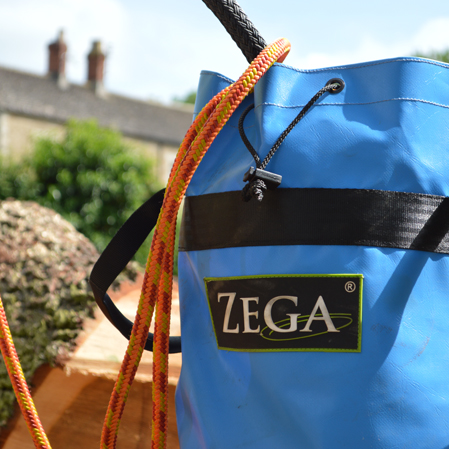
This 16mm diameter rope with 50 metres of length is easy to handle. It also has a breaking strain of 4,454kg. It’s an extremely soft rope so is easy on the hands and is very lightweight for its size, thanks to the hollow core construction. Great for tying knots.
Proper Rope Care
Ropes don’t last forever. Exposure to the rigours of tree care, as well as the elements out on the field, adverse weather and contaminants, all start to degrade ropes in a relatively short time. All the more reason to take care of them in order to maximise the lifespan.
To make sure that your ropes stay in good shape while you’re using them, you should do the following:
- Select the right rope for the right task, taking into account its strength, construction, elongation, and firmness.
- Inspect your ropes on a regular basis, looking for any and all signs of damage.
- Wash your ropes routinely, especially when dirt is starting to accumulate. Something like the Beal Rope Cleaner is perfect for this.
- Mind its working load limit, as ropes will fail if you push it beyond its breaking strength.
- Use a rope bag to keep them clean while on the field and prevent it from getting unnecessary damage during storage or transit.
- Know when to retire your ropes, depending on how often you use them. Unused ropes can last up to 10 years (please refer to manufacturer information and LOLER regulations for more specific guidance), while those used frequently can become unserviceable very quickly. Ropes that have sustained a fall should be retired immediately as a shock loading can severely decrease the breaking strain.
When you are in a high-risk workplace, your own and your team’s safety depends a lot on your gear. This starts with picking the right rope and other equipment. Remember to use our guidelines above and take proper care of your ropes. These are long-term investments not only to get the job done but to maintain the safety of the workplace and the integrity of your company.

